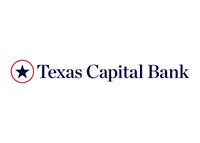BrioDirect

Updated July 22, 2024
High-yield savings accounts can be a great place to put money that you’re saving and want to earn a competitive APY on, but you aren’t sure on the time horizon for the money. Bankrate’s top high-yield savings offers pay much higher APYs than the national average yield of 0.61 percent.
Bankrate provides you with timely news and rate information on the top savings yields from some of the most popular and largest Federal Deposit Insurance Corp. (FDIC)-insured banks and National Credit Union Administration (NCUA)-insured credit unions. This way you don’t have to spend time searching many bank and credit union websites. Since 1976, Bankrate has been a trusted source of banking information to help you make well-informed decisions on your finances.
Page preview:
The following accounts can be found at most banks and credit unions. They’re federally insured for up to $250,000 and offer a safe place to put your money while earning interest.
CDs are best for individuals looking for a guaranteed rate of return that’s typically higher than a savings account. In exchange for a higher rate, funds are tied up for a set period of time and early withdrawal penalties may apply.
Checking accounts are best for individuals who want to keep their money safe while still having easy, day-to-day access to their funds. ATM and other transactional fees may apply.
Savings and MMAs are good options for individuals looking to save for shorter-term goals. They’re a safe way to separate your savings from everyday cash, but may require larger minimum balances and have transfer limitations.
Note: Annual percentage yields (APYs) shown were updated between July 19 and July 25. All other information is current as of July 22. Bankrate's editorial team validates this information regularly, typically biweekly. APYs may have changed since they were last updated and may vary by region for some products. Bankrate includes only FDIC banks or NCUA credit unions in its listings.










Our banking editorial team regularly evaluates data from more than a hundred of the top financial institutions across a range of categories (brick-and-mortar banks, online banks, credit unions and more) to help you find the options that work best for you.
48 years
of industry experience
3 k
deposits rates tracked
120
banks reviewed
Even though the Federal Reserve kept the federal funds rate the same in June, you can currently find savings accounts with yields greater than the rate of inflation.
The Fed might cut rates only one time this year. That rate cut might reduce top savings yields, but it’s likely not to be significant. It’s important to remember that the Fed raised rates 11 times in the current rate cycle, and some of those were large increases.
Returns on savings accounts will likely remain at attractive levels for some time, with little change expected until the prospect of Fed rate cuts becomes clearer.— Greg McBride, CFA, Bankrate chief financial analyst
While it’s easy to find a top-yielding account these days that beats inflation, there are plenty of other savings accounts that earn uncompetitive rates. For instance, the national average savings account rate as of July 26, 2024, is just 0.61 percent APY, according to Bankrate’s most recent survey of banks. That average factors in competitive rates commonly offered by online banks, as well as rock-bottom rates often found at large brick-and-mortar banks.
Only 67 percent of Americans with short-term savings currently have an online savings account that earns a competitive yield of 4 percent or greater, Bankrate’s Online Savings Survey found.
The top three factors to look for when choosing a high-yield savings account are:
High-yield savings accounts typically pay a much higher APY than traditional savings accounts, providing savers the ability to earn more on their money while still enjoying the security of a federally insured account. Traditional savings accounts are commonly offered at brick-and-mortar banks and larger banks. These accounts may yield close to nothing, often around 0.01 percent APY. High-yield savings accounts can earn hundreds of times more these days.
Most high-yield savings accounts have a variable APY, which means the yield is subject to change. Consumers looking for a guaranteed yield should consider a certificate of deposit (CD), and a no-penalty CD might be a good option for those who prefer both a fixed APY and access to their money without incurring a penalty.
Savings accounts usually earn compound interest, which simply means you’ll earn interest on interest. As such, you’ll earn interest on your principal as well as the interest that accumulates over time.
Below are a few important features to consider when searching for a high-yield savings account. When choosing which account is right for you, also take a look at Bankrate’s expert reviews of popular banks, many of which offer high-interest savings accounts.
A high-yield savings account is ideal for someone who’s currently earning low interest on their savings account – or no interest at all – and is eager to boost their savings potential.
A good time to get a savings account is when:
High-yield savings accounts with no minimum opening deposit requirement, no minimum balance requirement and no monthly service fees can be a good choice for nearly anyone. People can have different money-related goals and be at different stages in their financial life and benefit from these accounts. Here are a few examples:
A high-yield savings account is a great way to ensure your down payment money will grow until you need it to buy a house, condo or apartment. And unlike most CDs, you can add to your balance at any time.
A good strategy when saving for your next vacation is to determine how much you’ll need for the trip and then open a dedicated savings account for it. Consider automating your savings to keep your savings goals on track.
A high-yield savings account allows you to earn a competitive yield on your balance as you save for your wedding. You can keep adding to this account all the way up until you say “I do.” Having a separate account devoted to wedding savings can help you monitor your progress more easily, which helps you meet your savings goals for the big day.

Before you dump your money into an account at your local bank, there are several steps you should take.
Learn moreSavings accounts are a good place to set aside funds for many financial goals. Here are the pros and cons of online high-yield savings accounts, so you can make sure one is right for you.
Online high-yield savings accounts typically pay a much higher APY than traditional savings accounts.
Many high-yield savings accounts offer digital tools that allow you to manage your savings easily through your computer, smartphone or tablet.
High-yield savings accounts at most banks and credit unions are insured by the federal government, meaning your money is safe.
Unlike with a certificate of deposit, funds in a high-yield savings account are easily accessible.
Rates for high-yield savings accounts are variable and could fall.
Some banks restrict withdrawals/transfers to only six a month.
Checks generally can’t be written using savings accounts.
Your money could get higher returns if you invest it.
Not all online banks offer branch or ATM access.
Traditional savings accounts
These accounts typically earn a very low yield, especially at major national banks – often less than the national average APY.
CDs
These generally earn a fixed APY for a certain period of time.
Money market accounts
A savings deposit account that typically offers check-writing privileges.
Checking accounts
Accounts for your daily transactions.
Bankrate’s editorial team is made up of five banking experts. These experts have researched numerous banks and at least twice a month review bank websites to make sure readers stay up to date on the latest rates and bank products.
We select banks that have high annual percentage yields (APYs), low minimum balances, banks that have highly-rated apps and banks that are popular and broadly available. We also include some of the largest banks, to help readers compare those to online-only banks.
Estimate how much your money could grow over time with a high-yield savings account.
Read Bankrate's expert reviews before deciding where to deposit your money.
Stay up-to-date on how your savings yield compares to the national average.